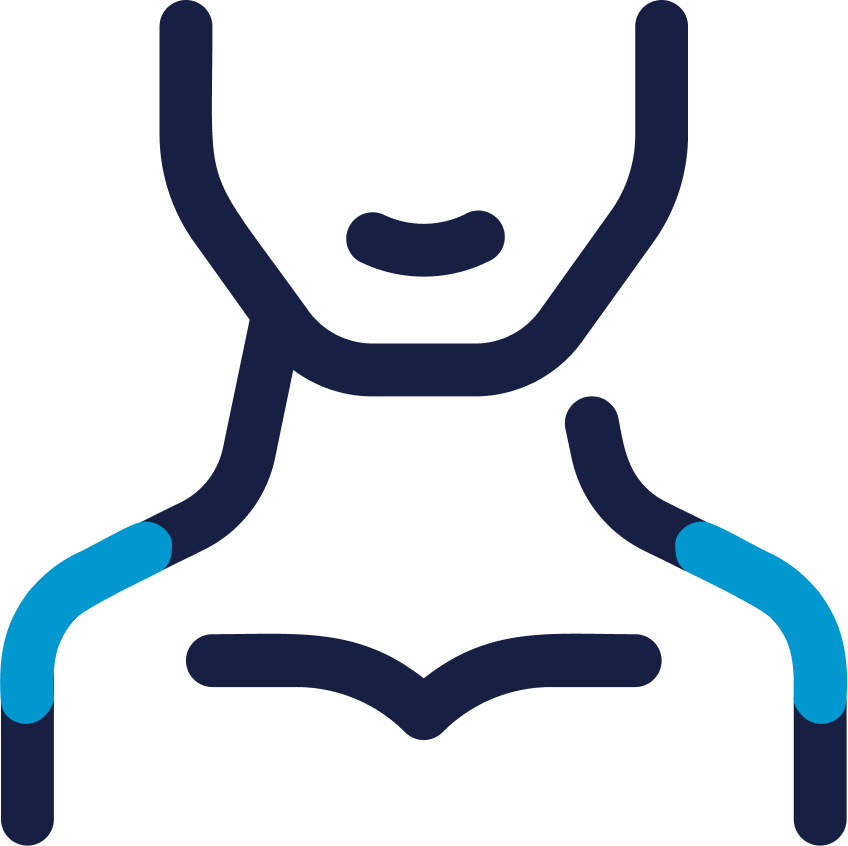
- Common Conditions
- /Shoulder

The shoulder is the most flexible joint in the body. There are several components present in this complex joint, and all of them work together to assist in the flexibility and the strength of the shoulder, as well as protect it. The labrum is one of these components.
The labrum is a ring of firm tissue located around the shoulder socket (glenoid) that stabilizes the joint. When the superior labrum is injured, the injury is referred to as a SLAP tear. SLAP stands for “superior labrum, anterior to posterior,” which means “the top part of the labrum, from the front to the back.”
The symptoms of a SLAP tear are similar to the symptoms that are associated with a number of other shoulder problems, including:
Pitchers who suffer from a SLAP tear may notice a decrease in the velocity at which they throw a ball, or have a “dead arm” feeling after throwing a pitch.
It is important to note that small labral tears are a normal part of aging and these tears are generally not painful. Painful tears are usually the direct result of injury or overuse. An injury to the superior labrum can occur as the result of acute trauma or repetitive overhead movement of the shoulder. SLAP injuries can also be the result of:
Individuals who participate in sports that require repetitive overhead use of the arm are at greater risk for developing a SLAP tear, such as athletes who throw items (pitchers, football players, tennis players, etc,) and weightlifters.
SLAP tears can be difficult to identify. The initial diagnosis will involve discussing your complete medical history with your doctor. Your doctor will also perform a physical exam, which will involve moving the shoulder to determine which movements cause pain. Your doctor may also have to perform an X-ray or an MRI scan to diagnose a SLAP tear.
Both surgical and non-surgical methods can be used to treat a SLAP tear.
Non-surgical methods include:
Rehabilitation may include exercises intended to strengthen the muscles of the rotator cuff and stretch the back of the shoulder gently.
In cases where surgery is needed, arthroscopy is the most commonly used surgical method. If surgery is required, an orthopaedic surgeon will determine the best repair option for you, based on the type of tear you have. He will also take your age, activity level, and the presence of any other injuries into account during the surgery.
After arthroscopic surgery for a SLAP tear, your arm will be placed in a sling for four to six weeks to stabilize the shoulder. Physical therapy will improve the strength of the shoulder. Within four to six months, patients may regain the full strength of their shoulder; however, it may take nine to twelve months for complete recovery, and before a patient feels completely “normal” again. This is especially true of high demand elite athletes. As always, listen to the recommendations of your doctor during the recovery period.
Yes, if a SLAP tear is left untreated, some common and long-term problems could occur, including: shoulder dislocation or instability, reduced range of motion, chronic pain, and adhesive capsulitis (frozen shoulder). Therefore, it’s best to pay a visit to O’Grady Orthopaedics the minute you suspect a problem.
Scar tissue begins building in the area of the tear almost immediately. Additionally, scar tissue may also bind together the ligaments, labrum and other tissue inside your joint capsule and around your rotator cuff. The scar tissue isn't flexible and will limit your range of motion.
This scar tissue limits movement of the entire joint and makes it difficult to reach for things and lift your arm. Your shoulder can "freeze" if left untreated. This is the condition known as adhesive capsulitis, or frozen shoulder, and can make movement impossible altogether.
No, while non-surgical treatments can help decrease your symptoms, surgery is required to repair your SLAP tear entirely since it doesn't heal itself.
MRI imaging tests are common for your doctor to use to diagnose a SLAP tear. They might or might not need to use contrast to help depict a SLAP lesion. With a SLAP tear, your superior (top) area of your labrum is injured. This is where your labrum and biceps tendon connects. In some cases, an MRI might not show a distinct SLAP tear and your orthopaedic surgeon will make the diagnosis during surgery if there's a strong suspicion you have a tear.
While you may not feel pain in your elbow, you may experience pain at the top of your shoulder at the location of the SLAP. You may also experience pain and a catching sensation with specific positions of your arm.
With a SLAP tear, you may feel:
Most patients experience an improvement in pain and the strength of their shoulder after SLAP tear surgery.

